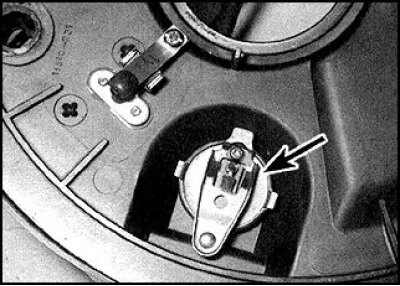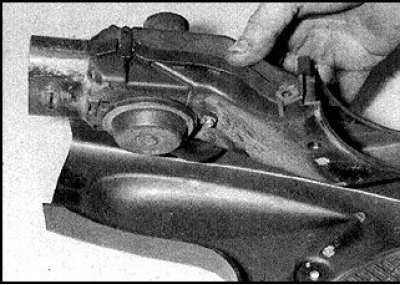As the engine warms up, the vacuum channel of the diaphragm is gradually blocked by a vacuum thermobimetallic valve, the damper partially opens and cold air begins to flow into the engine.
Examination
1. To check, disconnect the air duct from the filter on a cold engine - the damper should completely close the hot air channel.
2. After starting the engine, the damper should immediately close the cold air channel and then gradually open.
3. To test the vacuum thermobimetal valve, disconnect and plug the vacuum tube. On a cold engine, a strong vacuum should be felt; on a warm engine, there should be no vacuum.
4. To check the thermostat, remove it and disconnect the vacuum tube. When suction through the fitting, the damper must close the cold air channel.
5. Replace defective vacuum valve and thermostat.
Vacuum valve replacement
1. Remove the air filter.

2. Bend the brackets and remove the vacuum valve (indicated by an arrow).
3. Remove and inspect the seal.
4. Put on the seal and install the valve.
5. Fasten the valve securely by bending the brackets.
6. Install a filter.
Thermostat damper replacement
1. Remove the air filter and nozzle.

2. Unscrew the three screws and remove the thermostat, disconnect the hose.
3. Loosen the screws and remove the diaphragm.
4. Install the new diaphragm onto the regulator flap and tighten the screws.
5. Attach the hose and install the regulator, tighten the screws.
6. Install a filter.